Navigating the complexities of the On Balance Volume indicator demands a strategic approach. To unlock its full potential, traders must grasp essential tips that go beyond the surface level.
Understanding the nuances of OBV's calculation, its role in trend identification, and how it complements other indicators are just the beginning. These top 10 tips offer a roadmap to harnessing the power of OBV in your trading arsenal, but there's more to uncover to truly master this valuable tool.
Understanding On Balance Volume (OBV)
On Balance Volume (OBV) serves as a pivotal momentum indicator developed by Joe Granville in 1963, providing insights into the volume dynamics impacting stock price movements. This indicator offers a unique perspective by incorporating volume into price analysis.
By tracking the flow of volume in and out of a stock, OBV helps traders gauge the strength behind price movements. When the OBV line rises, it indicates that the volume on up days is surpassing the volume on down days, suggesting accumulation and potential price appreciation.
Conversely, a declining OBV line signals distribution and foreshadows potential price declines. Notably, OBV movements often precede changes in price direction, making it a valuable tool for confirming trends and understanding market sentiment.
Additionally, achieving a new high in OBV can signify strong buying pressure, reaffirming the bullish momentum in a stock. Overall, understanding how OBV integrates volume and price dynamics can enhance trading strategies and decision-making processes.
Importance of Volume Analysis
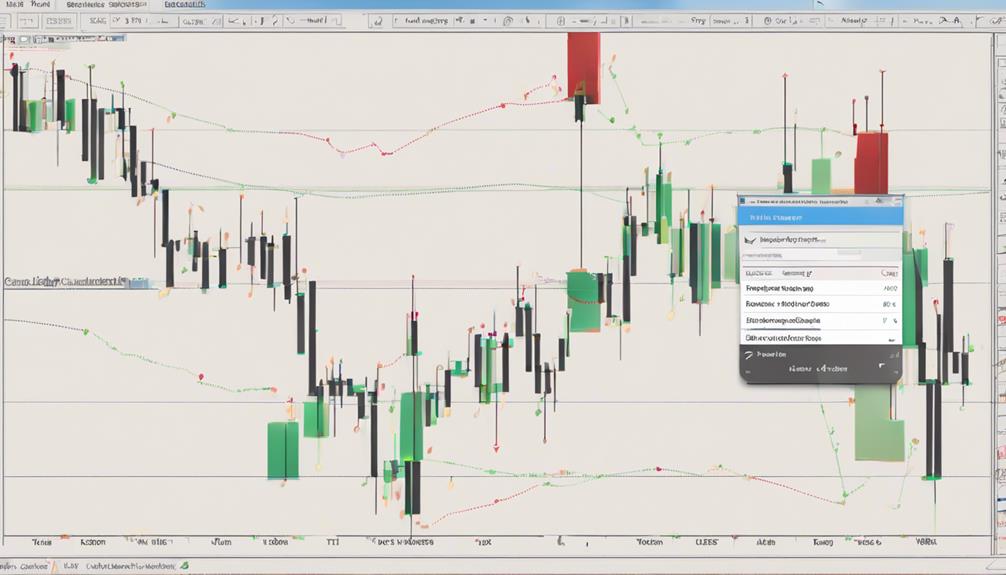
Understanding the significance of volume analysis in market evaluation and price assessment is paramount for informed trading decisions and strategic positioning in the financial landscape. Volume analysis plays a crucial role in deciphering market dynamics and identifying potential trading opportunities. Here are three key points highlighting the importance of volume analysis:
- Market Dynamics:
Volume analysis provides insights into market trends, shifts, and potential reversals by analyzing trading volume patterns. It helps traders understand the underlying market sentiment and activity levels, aiding in making well-informed decisions.
- Trend Confirmation:
Utilizing volume indicators such as the On-Balance Volume Indicator (OBV), Chaikin Money Flow (CMF), and Money Flow Index (MFI) enhances the effectiveness of trading strategies. These indicators help confirm trends and validate price movements, guiding traders in their decision-making processes.
- Effective Trading Strategies:
Incorporating volume analysis into trading strategies is essential for staying competitive and maximizing profits. By understanding volume patterns and market dynamics, traders can develop robust strategies that capitalize on market opportunities and mitigate risks effectively.
Interpreting Volume Patterns
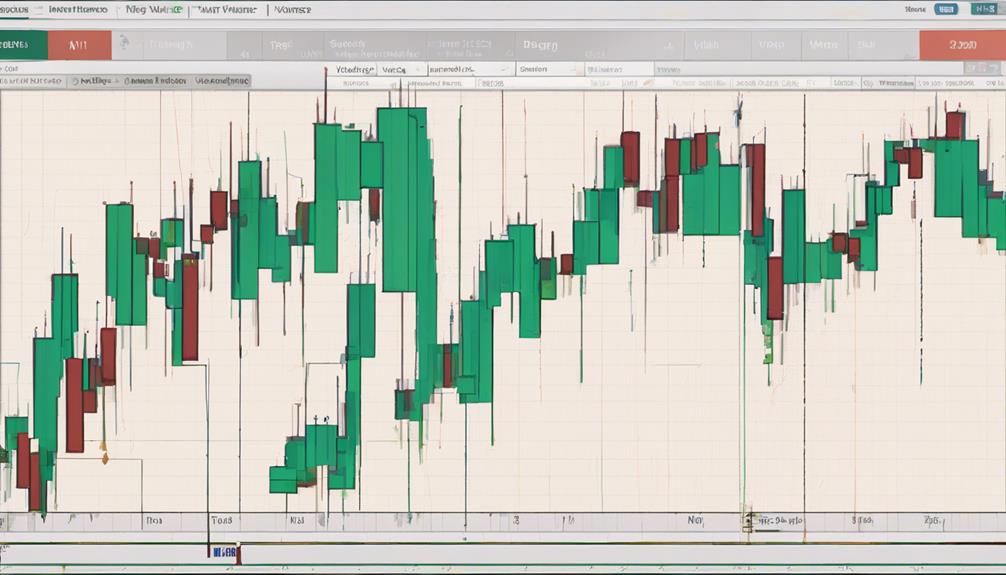
Analyzing volume trends provides valuable insights into market dynamics, distinguishing between bullish and bearish signals.
Volume spikes hold particular significance, indicating potential shifts in market sentiment or the emergence of new trends.
Understanding these volume patterns is essential for traders seeking to navigate the complexities of market movements with precision and confidence.
Volume Trends Analysis
Efficient interpretation of volume patterns is pivotal in accurately predicting price movements in the financial markets. When analyzing volume trends, several key points should be considered:
- OBV: On-Balance Volume is a useful indicator that helps traders understand the relationship between trading volume and price movements. Rising OBV indicates buying pressure, while falling OBV suggests selling pressure.
- Trading Volume: Monitoring trading volume is essential for identifying market intentions. High volume during price rallies confirms the strength of the trend, while low volume may indicate a potential reversal.
- Price Movements: Volume trends analysis aids in forecasting potential price movements. Understanding how volume patterns coincide with price action can provide valuable insights for making informed trading decisions.
Bullish Vs. Bearish Signals
Interpreting volume patterns in the On-Balance Volume indicator plays a crucial role in distinguishing between bullish and bearish signals in the financial markets.
When the OBV rises alongside increasing trading volume on up days, it generates bullish signals. Conversely, if the OBV falls accompanied by higher volume on down days, it indicates bearish signals. Understanding these patterns helps traders identify shifts in market sentiment.
A rising OBV coupled with strong volume suggests potential bullish trends, while a declining OBV with increasing volume indicates possible bearish trends. By closely analyzing trading volume in relation to OBV movements, investors can gain valuable insights into market dynamics and make more informed trading decisions based on the prevailing sentiment.
Volume Spikes Importance
Volume spikes serve as pivotal indicators of market activity, often heralding potential trend reversals.
- Identifying Trend Reversals: Sudden spikes in volume can signify a possible change in the direction of a trend.
- Risk Management: Monitoring volume spikes assists in assessing the level of risk associated with a particular trade or investment.
- Confirmation of Trends: Analyzing volume patterns during spikes can help confirm the strength of an existing trend or indicate a potential market shift.
Understanding the significance of volume spikes is crucial for traders as it enables them to make informed decisions, manage risks effectively, and stay ahead in the market.
Using OBV for Trend Confirmation
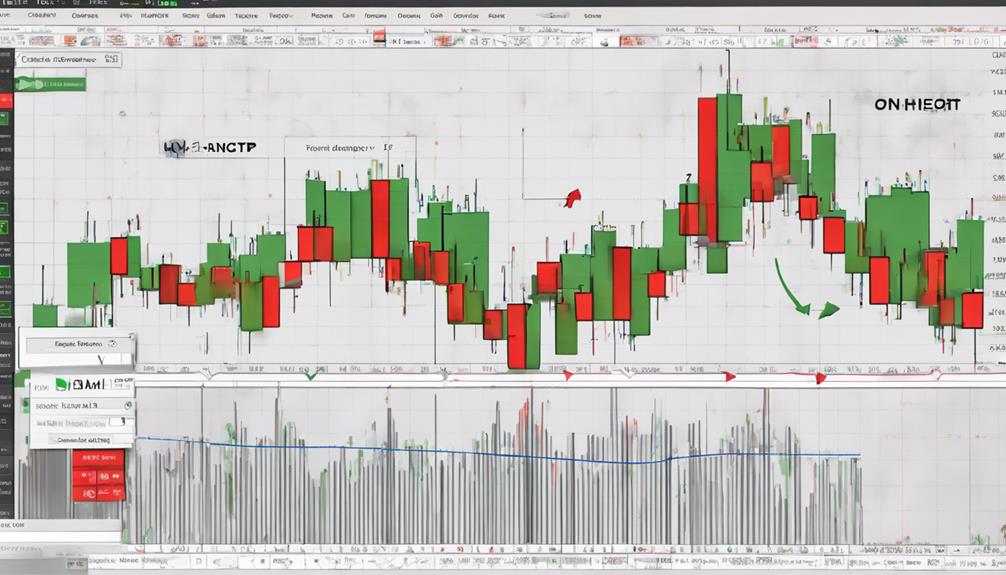
Utilizing the On Balance Volume (OBV) indicator for confirming trends in the market provides traders with valuable insights into the strength and momentum of price movements. OBV is a powerful tool for trend confirmation as it correlates volume with price movements. When OBV rises alongside an increase in price, it validates the strength of an uptrend. Conversely, a falling OBV accompanied by a decline in price confirms the momentum of a downtrend. By analyzing OBV in conjunction with price action, traders can identify potential trend reversals and continuations more effectively.
Traders can use OBV to gauge the underlying strength of a trend and validate signals provided by other technical indicators. The OBV indicator serves as a reliable tool to confirm the sustainability of a trend, helping traders make informed decisions regarding entry and exit points. Combining OBV with other trend-following indicators enhances the overall analysis, providing a more comprehensive view of market dynamics. By incorporating OBV into their trading strategies, investors can gain a competitive edge in navigating the complexities of the financial markets.
Identifying Breakouts With OBV
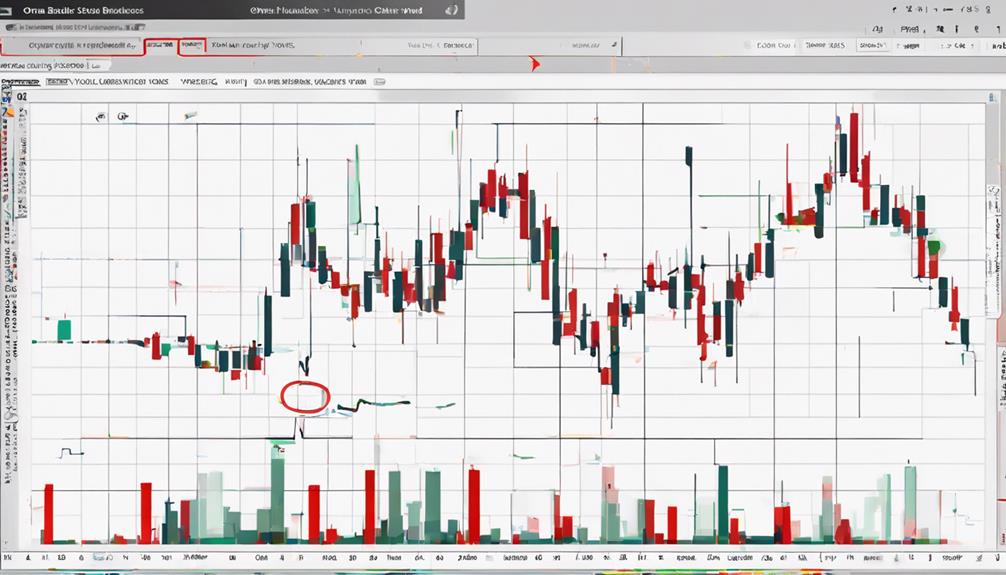
When observing market dynamics, discerning breakout opportunities with the On Balance Volume (OBV) indicator can provide traders with valuable insights into potential shifts in price movements. Volume spikes play a crucial role in confirming breakouts, indicating strong market interest and the likelihood of significant price movements.
To effectively identify breakouts with OBV, traders should focus on monitoring OBV spikes, which often precede price breakouts, providing early signals for potential trading opportunities. By conducting thorough breakout analysis using OBV, traders can enhance their decision-making process and increase trading accuracy.
Analyzing volume spikes in conjunction with OBV can help traders capitalize on breakout opportunities by confirming the strength of the breakout and validating the market interest behind it. Utilizing OBV for breakout analysis not only improves the overall trading strategy but also assists traders in making well-informed buy/sell decisions based on reliable volume dynamics.
Leveraging OBV for Buy/Sell Signals
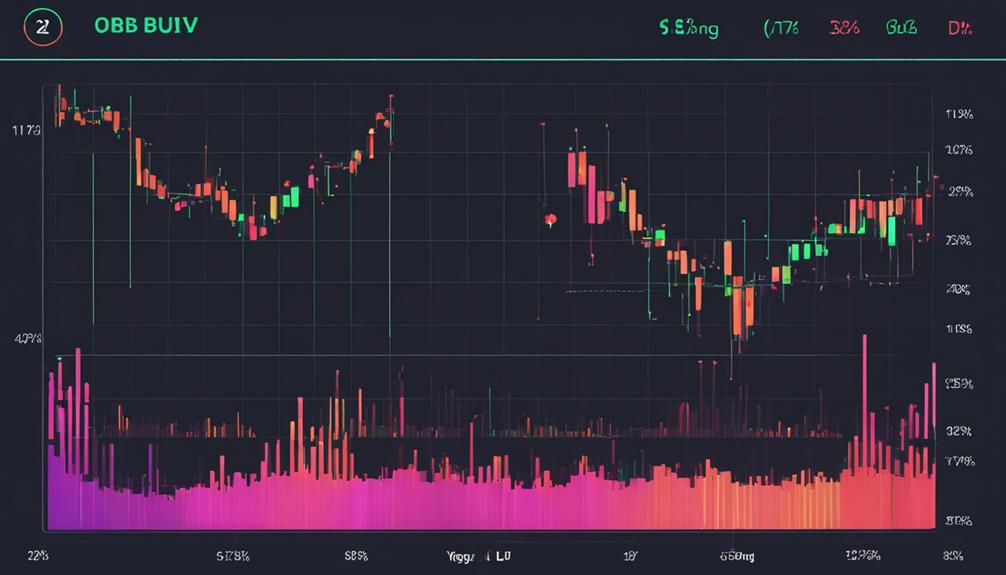
When leveraging OBV for buy/sell signals, traders should pay attention to the indicator's movements in relation to volume on up and down days to identify potential entry and exit points.
Additionally, observing the zero line crossings can help gauge buying or selling pressure in the market.
Combining OBV with other indicators such as moving averages can improve the accuracy of buy/sell signals for more informed trading decisions.
OBV for Trend Identification
The effective utilization of On Balance Volume (OBV) as a tool for trend identification in trading involves closely monitoring its correlation with price movements to derive valuable buy/sell signals. When leveraging OBV for trend identification, traders should consider the following:
- Confirmation of Trends: OBV helps confirm the strength of trends by aligning volume data with price movements, offering insights into the sustainability of a trend.
- Buy/Sell Signals: Rising OBV in conjunction with price increases can indicate potential buying opportunities, while falling OBV alongside price declines may suggest selling pressure.
- Decision-Making Tool: Incorporate OBV into trading strategies to enhance trend identification, validate market moves, and make informed buy/sell decisions based on the volume-price relationship.
OBV Divergence Signals
How can traders effectively leverage OBV Divergence signals for enhanced buy/sell decisions in trading scenarios?
OBV Divergence signals play a crucial role in identifying potential trend reversals based on volume analysis. Bullish OBV Divergence occurs when the price forms a lower low while the OBV shows a higher low, indicating accumulation and a probable price increase. On the other hand, Bearish OBV Divergence is observed when the price establishes a higher high, but the OBV forms a lower high, signaling distribution and a potential price decrease.
Traders use these signals to anticipate market sentiment shifts and validate trends, empowering them to make well-informed trading choices. Understanding OBV Divergence is essential for traders seeking to capitalize on opportunities arising from trend reversals.
Using OBV With MA
Utilizing the On Balance Volume (OBV) indicator in conjunction with Moving Averages (MA) can significantly enhance traders' ability to generate effective buy and sell signals in various market conditions. When combining OBV with MA, traders should look for crossovers between the OBV and MA lines to identify potential entry and exit points. It is essential to use OBV to confirm trends by comparing its direction with the MA trends, as this can provide additional validation for trading decisions based on volume dynamics.
Buy signals are typically generated when OBV crosses above the MA line, indicating an increase in buying pressure, while sell signals are triggered when OBV crosses below the MA line, signaling potential selling pressure. By leveraging OBV with MA, traders can improve the accuracy of their trading strategies.
Key Points:
- Look for crossovers between OBV and MA lines for buy/sell signals.
- Use OBV to confirm trends by comparing its direction with MA trends.
- Buy signals occur when OBV crosses above the MA line, while sell signals are triggered by OBV crossing below the MA line.
Trading Volume Spikes Effectively
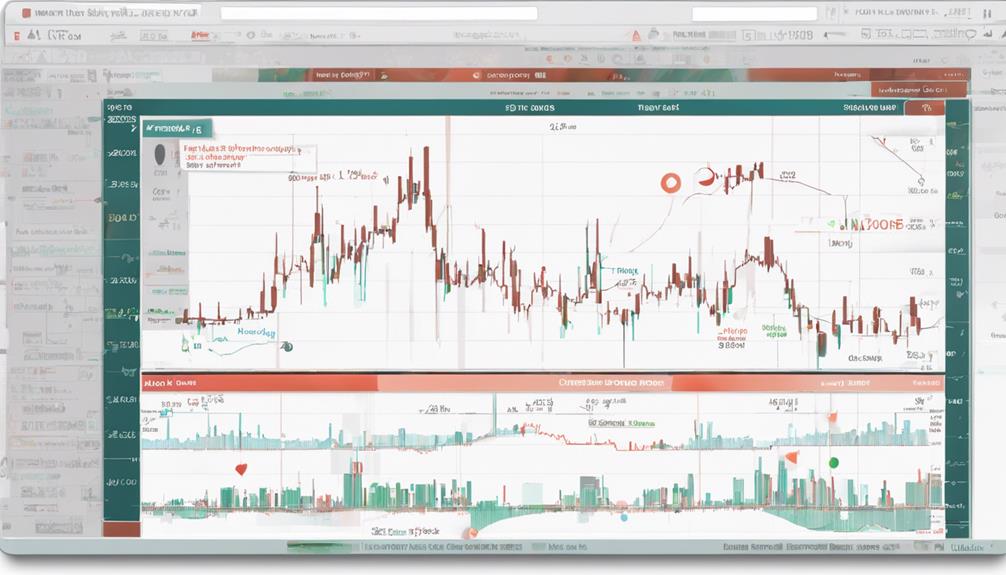
Navigating through trading volume spikes effectively requires astute observation and strategic analysis of market activity. Volume spikes offer valuable insights into market dynamics, indicating increased interest and potential shifts in price direction. By interpreting these spikes, traders can anticipate price movements and identify lucrative trading opportunities.
Monitoring volume spikes is essential for enhancing risk management strategies, as it provides confirmation of trend strength and helps in adjusting trading approaches accordingly. Understanding the significance of volume spikes enables traders to stay ahead of market trends and capitalize on strategic moves.
Comparing OBV With Other Indicators
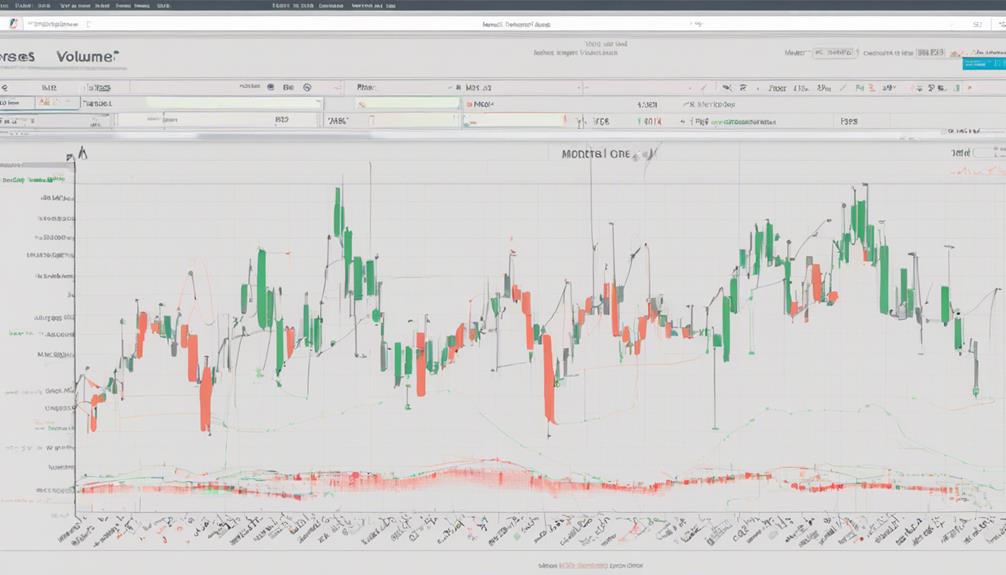
When comparing the On Balance Volume (OBV) indicator with other indicators such as Accumulation/Distribution (A/D), traders gain valuable insights into measuring money flow in securities from distinct perspectives.
Key Comparisons:
- Methodology:
- OBV is a volume-based indicator that tracks volume flow based on price movements, while A/D uses price changes to calculate money flow.
- Insights Offered:
- OBV provides unique insights into market dynamics through volume changes, offering a different perspective on market sentiment compared to price-based indicators like A/D.
- Enhancing Trading Decisions:
- Understanding the differences between OBV and A/D can enhance traders' ability to interpret market trends effectively, enabling them to make more informed decisions.
Calculating and Setting Up OBV
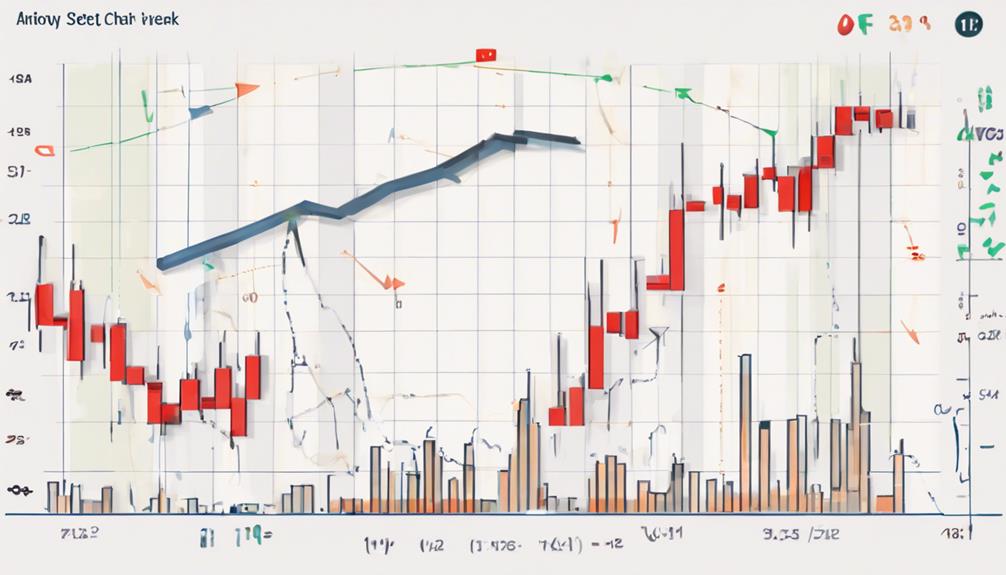
To effectively implement the On Balance Volume (OBV) indicator, traders must accurately calculate and set up the indicator by tracking volume changes in relation to price movements. Calculating OBV involves adding the volume on up days and subtracting the volume on down days.
The OBV indicator is similar to a cumulative line that moves with price changes, reflecting the balance between buying and selling pressure. This cumulative line helps traders assess the strength of price movements based on volume changes.
Setting up OBV requires monitoring the volume flow in and out of a security over time to determine the accumulation or distribution of shares. By plotting the OBV line alongside price movements, traders can identify divergences that may signal potential price reversals or confirm the current trend.
Understanding how to calculate and set up the OBV indicator is essential for utilizing this tool effectively in technical analysis.
Tips for Effective OBV Trading
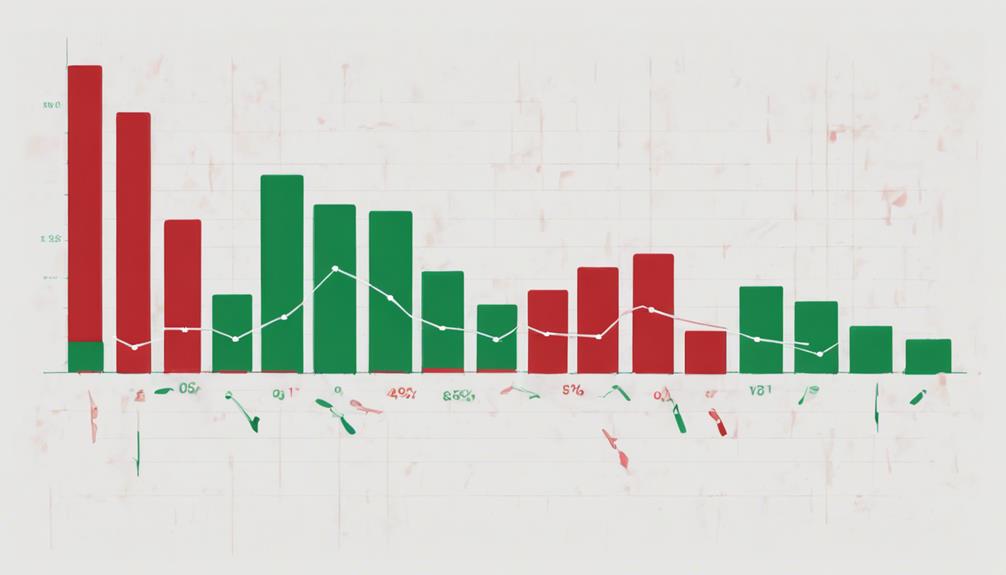
Effective OBV trading requires a strategic approach that incorporates OBV trading strategies and proper interpretation of the OBV indicator.
By understanding how to use OBV in conjunction with price action and other technical indicators, traders can enhance their decision-making process.
It is crucial to pay attention to divergences between OBV and price movements, as well as to use OBV to filter out noise and focus on high-probability trading opportunities.
OBV Trading Strategies
Utilizing On Balance Volume (OBV) in trading provides valuable insights for making informed decisions in the financial markets. When implementing OBV trading strategies, consider the following key points:
- Trend Confirmation: OBV can help confirm the strength of a price trend by analyzing volume trends alongside price movements.
- Divergence Detection: Look for discrepancies between OBV and price trends to anticipate potential reversals or continuations in the market.
- Breakout Signals: Watch for OBV breakouts above or below key levels to identify potential buying or selling opportunities based on volume trading dynamics.
OBV Indicator Interpretation
When analyzing the OBV indicator for effective trading, understanding its interpretation is paramount for making informed decisions in the financial markets.
The OBV indicator interprets trading volume to predict price movements accurately. A rising OBV suggests strong buying pressure, indicating a potential price increase. Conversely, a falling OBV indicates selling pressure, signaling a potential price decrease.
By monitoring OBV movements, traders can confirm trends, identify reversals, and generate buy/sell signals. Recognizing these patterns is crucial for making timely and profitable trading decisions.
Can the Top 10 Tips for Navigating the On Balance Volume Indicator be Applied in the Step-by-Step Tutorial?
When following a balance volume indicator tutorial, it’s essential to apply the top 10 tips for navigating the On Balance Volume Indicator. Understanding the nuances of this tool and its relevance to trading can help traders make informed decisions and maximize their returns.
Frequently Asked Questions
What Is the Strategy On-Balance Volume?
The On-Balance Volume (OBV) strategy, developed by Joe Granville in 1963, is a momentum indicator that correlates volume with price fluctuations. It gauges buying and selling pressure, anticipating price changes based on volume flow dynamics.
How Do You Read a Balance Volume Indicator?
Reading a balance volume indicator involves analyzing volume changes corresponding to price movements. Rising OBV signals buying pressure and potential price increase, while falling OBV indicates selling pressure and potential price decrease. Understanding these movements aids in making informed trading decisions.
How Do You Use a Volume Indicator Effectively?
To use a volume indicator effectively, analyze volume trends in conjunction with price movements to gauge market sentiment. Look for confirmation of price trends, divergences, and trade signals. Integrating volume indicators with other tools can enhance decision-making in trading strategies.
What Is the Best Time Frame for OBV Indicator?
The best time frame for the OBV indicator depends on your trading style and goals. Long-term trends are often observed on daily charts, while shorter time frames like 4-hour or 1-hour can be used for active trading.
Conclusion
In conclusion, mastering the On Balance Volume (OBV) indicator requires a deep understanding of its history, calculation, and applications. By utilizing OBV for trend identification, divergence detection, and trading strategies, traders can navigate market trends effectively.
Comparing OBV with other indicators, considering market environments, and combining it with additional tools can enhance analysis and decision-making. Remembering the advantages and limitations of OBV will lead to more informed trading decisions, maximizing its potential for successful outcomes.


